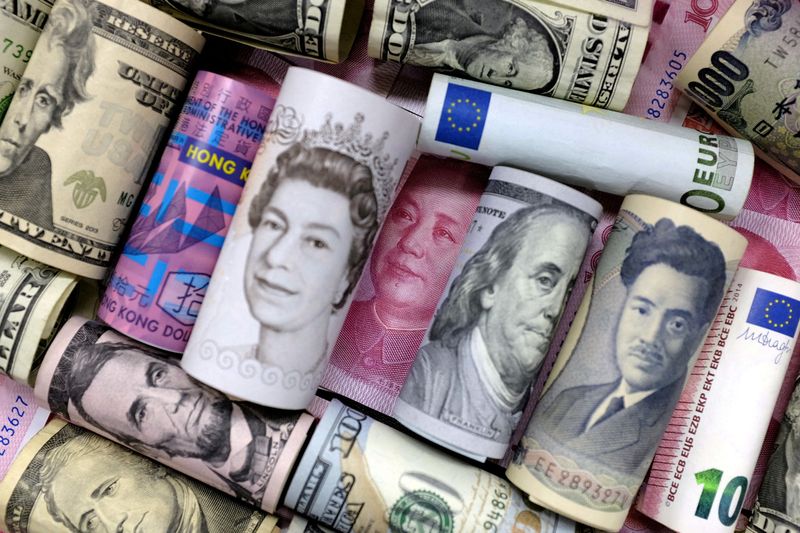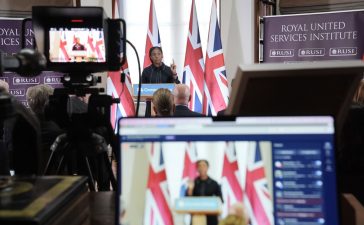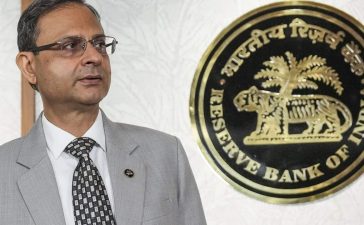
By Samuel Indyk and Gertrude Chavez-Dreyfuss
LONDON/NEW YORK (Reuters) – The yen dropped against the U.S. dollar on Wednesday to its weakest since mid-1990, with markets alert to any signs of intervention from Japanese authorities to prop up their currency.
As the yen slid, the greenback edged higher, recovering against most currencies from falls caused by Tuesday’s data showing U.S. business activity slowed this month.
rose as high as 155.17 yen, its strongest since mid-1990, before falling back in choppy trading, a sign of market nervousness around the 155 level. It was last at 155.08, up roughly 0.2%.
The yen’s weakness against the dollar has ignited the market’s anxiety surrounding currency intervention. Japanese Finance Minister Shunichi Suzuki and other policymakers have said they are watching currency moves closely and will respond as needed.
However, senior ruling party official Takao Ochi told Reuters that a decline in the currency towards 160 could trigger intervention. Ochi said if the yen slides further toward 160 or 170 to the dollar, “that may be deemed excessive and could prompt policymakers to consider some action.”
Market participants, however, have taken Japanese comments on the yen with a grain of salt.
“The market continues to think that the Bank of Japan has this line in the sand. It was going to be 152, then it was 155. But because the BOJ (Bank of Japan) is not showing up now, it’s now 160,” said Marc Chandler, chief market strategist, at Bannockburn Global Forex in New York.
remove ads
.
“In the big picture, it should be pointed out that the September and October 2022 yen intervention was successful because Japan was able to pick a top in Treasury yields. This time the BOJ is not as confident ahead of non-farm payrolls next Friday and the following CPI (consumer prices index) number,” he added.
The Bank of Japan is widely expected to leave policy settings and bond purchase amounts unchanged at the conclusion of a two-day meeting on Friday, having raised interest rates for the first time since 2007 just last month.
BOJ Governor Kazuo Ueda has said the central bank may raise interest rates again if the yen’s decline significantly pushes up inflation.
The fall in the yen comes after a string of strong U.S. inflation data pushed the dollar to five-month highs and reinforced expectations that the Federal Reserve is unlikely to be in a rush to cut interest rates this year.
The , which measures the currency’s value against six major peers including the euro, sterling and yen, was last up 0.1% at 105.82. Earlier, the index hit a 105.59, a roughly two-week low, driven lower the day before by surprisingly robust European activity data and cooling U.S. business growth.
The greenback pared gains after data showed new orders for key U.S.-manufactured capital goods increased moderately in March and data for the prior month was revised lower, suggesting that business spending on equipment likely remained weak in the first quarter.
The euro was little changed at $1.0698, following Tuesday’s rally after data showed business activity in the euro zone expanded at its fastest pace in nearly a year, primarily due to a recovery in services.
remove ads
.
was also flat at $1.2445, consolidating Tuesday’s gains on data showing British businesses recorded their fastest growth in activity in nearly a year and after comments from Bank of England chief economist Huw Pill said interest rate cuts remained some way off.
Friday sees the release of the Fed’s targeted consumer inflation measure, the PCE deflator. Markets currently price in a 67% chance of a first U.S. rate cut by September, according to the CME’s FedWatch tool.
The was slightly higher at US$0.6491, after pushing as high as US$0.6530 for the first time since April 12, as it rallied on the back of hotter-than-expected consumer price data. That led markets to abandon hopes for any rate cuts from the Reserve Bank of Australia in the near term.











